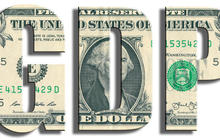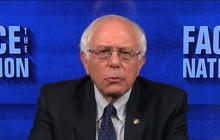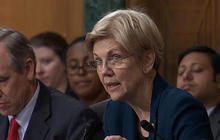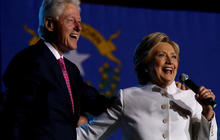|
Posted: 27 Oct 2016 07:57 AM PDT
AT&T executives think their plan to take over Time Warner is too big to fail. But the proposed merger’s astronomical cost may prove them wrong. The $85 billion deal, combining the nation’s largest phone, Internet and pay-TV provider with an entertainment and news colossus whose holdings include CNN, HBO, TBS, TNT and Warner Bros. Studios, would be one of the largest media mergers ever. For the deal to go through, AT&T and Time Warner need the approval of government regulators, especially those at the Department of Justice, who will vet it to see if it violates antitrust laws. But there’s another metric by which regulators should evaluate the merger: its impact on real people, especially low-income households and communities of color. If approved, the merger would saddle AT&T with a whopping debt load estimated to be $187 billion, according to industry analysts. AT&T took on tens of billions of dollars in debt last year when it completed its $69 billion takeover of DirecTV, a move soon followed by price increases for DirecTV and AT&T broadband customers. There’s every reason to believe that similar rate hikes would follow AT&T’s acquisition of Time Warner. But the deal’s biggest proponents certainly won’t admit that. “I think anyone who characterizes this as a means to raise prices is ignoring the basic premise of what we’re trying to do here,” AT&T CEO Randall Stephenson told investors during a recent conference in California. Stephenson and Time Warner CEO Jeff Bewkes went on a largely unsuccessful tour of media outlets to pump the deal and address its doubters. “This will be essentially a catalyst to more competition, more innovation,” Bewkes said during a stop at CNN studios in New York. “More competition leads to lower prices and happier consumers.” Stephenson and Bewkes are ignoring some fundamental math here. AT&T will need to regularly pay interest to service its massive debt. The telecommunications giant doesn’t print cash; it bills customers. In other words, to pay down its interest, AT&T will have to hike prices. It’s likely those cost increases would occur in its consumer-product markets, including broadband, where AT&T faces little to no real competition. It could also raise the rates it charges and restrict the offerings it makes to other cable distributors that carry channels like HBO and CNN, limiting what people can see and generating new costs that would be passed along to pay-TV subscribers everywhere. This trickle-down of higher prices would be felt not in the boardroom but in the living room, where working families are already struggling to keep up with escalating costs for Internet, wireless services and pay-TV. Higher prices would put Internet access further out of reach of the more than 30 million adults in this country stuck on the wrong side of the digital divide. According to U.S. Census data, this gap is most pronounced in African-American and Hispanic communities. People already suffering from generations of systemic racism are disadvantaged further by lack of access to the educational and work opportunities that are at the fingertips of those with high-speed connections. For the enormous amount of money AT&T is shelling out to acquire Time Warner, it could run super-fast gigabit-fiber Internet services to every single home in America. That would truly serve as “a catalyst to more competition, more innovation,” to borrow Bewkes’ words. But neither he nor Stephenson care about providing better, more affordable services to more people. These mergers aren’t about that. They’re about increasing the company’s control and increasing shareholder value. On that score Stephenson and Bewkes may succeed. For his part, Bewkes could get a nearly $400 million payout by exercising his stock options at the close of the deal. Enriching investors (themselves included) is Stephenson and Bewkes’ job. It’s the job of regulators at the Department of Justice to decide whether this deal’s alleged benefits outweigh antitrust concerns. There’s no doubt that this mega-merger doesn’t benefit ordinary Americans. People want reliable, cheap and fast connections to the open Internet. We also need a choice of providers, not a few bloated companies controlling access to both the Internet and the content that flows across it. The merger of AT&T and Time Warner is just too big and costly to accomplish that. For that reason, it must be blocked. |
Theresa May occasionally provides valuable detail about the way she is approaching her Brexit negotiation. One such moment came in the House of Commons on Monday when she was asked a question by a Labour MP on whether the UK would be leaving Europe’s customs union.
The prime minister could have batted the issue away, as she often does, by saying she will not give a running commentary on her planned negotiation. Instead, she was more revealing.
“The important point about the customs union is that the way in which you deal with the customs union is not a binary choice,” she told Chris Leslie. “There are different aspects to the customs union, which is precisely why it is important to look at the detail and get the answer right, not simply make statements.”
The prime minister’s answer confirms the direction in which she is heading on this crucial issue. Chancellor Philip Hammond has for months warned that quitting the customs union would saddle companies with form-filling, delays and frontier checks and require a new north-south border in Ireland. Liam Fox, international trade secretary, has called for the UK to leave, arguing that this is essential if Britain is to strike trade deals with third countries. There is speculation that the clash has become so fraught that it might lead to one of them resigning.
Mrs May’s rejection of the issue as a “binary” one suggests she is seeking a compromise. As the FT has reported, an idea being mooted is that the UK would leave the customs union but allow industries with complex supply chains, such as cars and aircraft manufacturing, to be given carveouts with a special regime to guarantee cross-border trade.
Mrs May’s pursuit of this solution may explain why Carlos Ghosn, chief executive of Nissan, recently left Downing Street in an upbeat mood, saying he was “confident” the UK would provide conditions that allowed the company to invest in Britain. After all, if the idea of special carveouts were realised, there would be no tariffs on cars traded between the EU and the UK and no customs checks on cars shipped across the channel.
However, the compromise the UK is seeking is not straightforward. Britain would need to get the EU to agree to such a settlement and there are two problems.
First, many in the EU would regard this as British cherry-picking. Cars are important, but so are chemicals, pharmaceuticals, food and drink and so forth. As John Springford of the Centre for European Reform puts it: “The EU27 will not allow the UK to pick favoured sectors to stay in: they will say it’s all or nothing.”
Second, such an agreement will fall foul of the World Trade Organisation’s most-favoured nation rules. Mr Springford says: “If the EU and the UK make trade in cars tariff-free with each other, they must eliminate tariffs on cars for all countries. The only way around this is to sign a trade agreement that covers the majority of goods sectors.”
Some analysts argue that it makes little sense for the UK government to choose which industries face customs costs with its largest trade partner. Instead, it would be far more sensible if the UK just stayed in the customs union. But this is impossible for Mrs May because the UK would not be able to sign free-trade agreements with countries outside the EU — and Mr Fox would be out of a job.
Background reading
The FT publishes the latest instalment in its Future of Britain Project, inviting readers to brainstorm ideas for the UK after Brexit. Here, Ryan Bourne of the Institute of Economic Affairs, says the UK must pursue a “hard Brexit” to create a more open economy.
Iain Martin argues that if the City of London is to thrive after Britain leaves the EU, it needs to rediscover the buccaneering spirit of the eighties (The Times).
William Hague says that the government must go beyond Heathrow and launch a new infrastructure plan in order to calm Brexit jitters (Telegraph).




